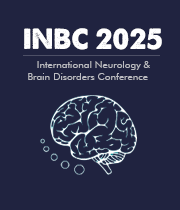Title : Early propranolol administration improves functional outcomes in traumatic brain injury. A systematic review
Abstract:
Background: Traumatic brain injury (TBI) is defined as an injury to the brain by an external force. They often present with increased intracranial pressure, activation of the sympathetic nervous system including paroxysmal sympathetic hyperactivity (PSH), and are associated with major morbidity and mortality. PSH is a clinical disorder secondary to TBI which includes clinical episodes of hypertension, tachycardia, tachypnea, fever, and dystonic postures. Standard treatment of TBI includes symptom management as well as strategies to reduce the chance of secondary injury due to hypoxia, cerebral hypoperfusion, or metabolic stress. Care is taken to manage airways, cardiac dysfunction, pain, and nutrition. Propranolol, a non-cardio-selective beta-blocker, is not a component of the standard of care but has been suggested to aid in the management of TBI patients through an unknown mechanism but hypothesized to quell PSH. Here, we conduct a scoping review to examine early propranolol administration in patients with TBI and its effects on functional outcomes.
Methods: We conducted a scoping review, following PRISMA guidelines, searching the PubMed database from 1990-2025 which included primary research articles and reviews on propranolol use in traumatic brain injury. Articles were reviewed for those that included human study participants, and discussed treatment and monitoring practices. Eligible studies included randomized controlled trials, observational studies, and meta-analyses reporting on functional outcomes, mortality, or length of stay in the hospital and intensive care unit (ICU).
Results: Search of the PubMed database yielded twelve papers published in the recent decades on the topic of early propranolol administration in treatment of traumatic brain injury. Reports showed conflicting conclusions on propranolol administration lowering mortality, and hospital and ICU length of stay. It is important to note that these studies are largely retrospective, often lack a considerable sample size and are not well controlled. A small body of literature describes propranolol administration prospectively and shows a slight increase in the quality of life for those who were given propranolol as well as decreased length of stays and mortality. The prospective literature is far better controlled and often has greater sample sizes.
Conclusion: There is a critical gap in the acute care for patients with traumatic brain injury. A small body of evidence suggests that early propranolol administration significantly benefits TBI patients and lessens their burden on the healthcare system. Future research will determine the proper utilization of propranolol and its implications across age, sex and other relevant risk factors.



